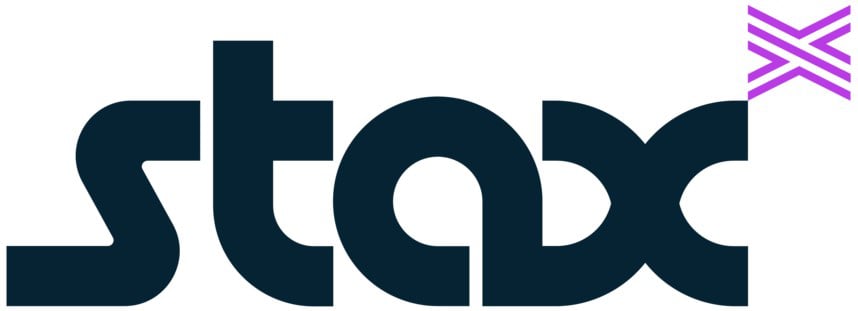How to Accept Payments Online

Many or all of the products featured here are from our partners who compensate us. This influences which products we write about and where and how the product appears on a page. However, this does not influence our evaluations. Our opinions are our own. Here is a list of our partners and here's how we make money.
Accepting payments online is an excellent way to help grow your sales — whether your business has a physical location or operates entirely virtually. Payment processing companies can help make this happen through online credit card processing, digital invoicing or ACH transfers.
To accept payments online, you’ll want to select a payment processor, which involves deciding on a merchant account type and payment gateway. You’ll also want to weigh the costs involved and decide which type of online payment method is best for your customers.
Ways to accept payments online
Accepting credit card payments online through a marketplace, e-commerce platform or app is common, but online payments don’t necessarily need to be paid with a credit card. Here are the main ways your business can accept payments online:
Online credit card processing: This is typically the best option for businesses that maintain an online store or let customers order ahead online. Though it costs money to accept credit cards online, including transaction and point-of-sale (POS) software fees, it’s a popular solution for a variety of business types, such as retail shops, restaurants and cafes.
Online invoicing: Project-based businesses and vendors that sell goods to other businesses may use their accounting software or payment processing services to send invoices with online payment buttons. Customers don’t need to use a credit card to pay, but if they do, payment processing fees apply. It’s also important to remember that invoices don’t require the customer to pay on the spot, so you may need to wait longer for funds to land in your business’s bank account.
ACH transfers: Businesses accepting one-time lump sums might choose to transact via ACH transfer to cut down on processing fees. Though they’re not always free, bank transfer rates are often significantly lower than credit card processing rates.
Learn more about what payment processors do
Our Nerdy picks for
1. Decide which merchant account type is best for your business
To accept online credit card payments, most businesses require some type of merchant account to hold customers’ credit card payments before they’re deposited into the business’s bank account. There are two main routes:
If you want a customizable option: Consider an individual merchant account as opposed to a merchant account that aggregates multiple businesses’ funds under one umbrella. An individual merchant account tailored specifically to your business typically offers more customization and account stability, in part because it tends to require a lengthy and involved application process.
If you need to start accepting payments quickly: A payment service provider may make sense. Also known as aggregators, these providers pool all their customers into a single merchant account (with sub-accounts for each individual customer). Payment service providers tend to offer turnkey solutions with a suite of tools, such as website building, reporting, team management and more. You can expect almost instant approval to start taking payments right away, but because of the pooled risk involved with multiple business accounts sharing one merchant identification number, sudden account freezes and terminations are more common.
NerdWallet rating 5.0 /5 | NerdWallet rating 5.0 /5 | NerdWallet rating 5.0 /5 |
Payment processing fees 0.40% + 8¢ plus interchange, in-person; 0.50% + 25¢ plus interchange, online. | Payment processing fees 2.6% + 10¢ in-person; 2.9% + 30¢ online. | Payment processing fees 2.7% + 5¢ in-person; 2.9% + 30¢ online. |
Monthly fee $0 | Monthly fee $0 Starts at $0/month for unlimited devices and locations. | Monthly fee $0 |
2. Factor in online payment processing costs
In most cases, you’ll acquire your merchant account from the same company providing your payment processing services. This is especially true if you end up going with a payment service provider. After you’ve decided which type of merchant account your business needs, you’ll next want to compare payment processing pricing models to find the most cost-effective solution for your company.
Interchange-plus: Processors like Helcim and Dharma Merchant Services, use an interchange-plus model, which passes savings to the merchant when a customer pays with a card that has low interchange rates. It may have discounts based on transaction volume, too. For each transaction, you pay the current interchange rate (which fluctuates) from the card network — e.g., Visa — plus whatever additional margin the payment processor charges. That payment processor fee is typically a percentage of the transaction plus a fixed number of cents.
Subscription-based: A subscription-based monthly plan, like one from Stax or Finix, may be the least expensive option for higher-volume businesses in particular. These plans include lower markups (on top of interchange fees) in exchange for a monthly fee, which can result in savings if you process enough transactions.
Sometimes there are additional costs to accept online payments, so read the fine print before making your final decision.
3. Select a payment gateway
A payment gateway is a place on a merchant’s website where customers securely enter their card information during the checkout process. Then, the gateway sends that information to the payment processor, so that it can authorize and facilitate the transaction.
Lots of payment processors, like Stripe and Square, come with a built-in gateway to accept online payments. If you opt for a separate gateway, expect to pay an additional fee for this service. NerdWallet's top picks for the cheapest payment gateways include options to help keep costs low.
4. Provide a way for customers to pay you online
In addition to considering which payment processor is best for your business, factor in how your customers will be interacting with your online storefront, mobile app or social media account. The process for entering credit card information should be straightforward and user-friendly.
Online shopping carts are a straightforward solution for e-commerce websites. Customers fill their digital shopping carts, store one or more items there until they’re finished shopping and then check out in a single quick transaction. If this sounds like the best fit, make sure your online payment processor integrates with your e-commerce platform or offers shopping cart add-ons.
Other methods include online invoicing or payment links. Online invoices are single-use documents specific to a customer and particular sale. Adding a click-to-pay button makes it easy and convenient for customers to complete the transaction. Payment links are URLs or QR codes that direct customers to a checkout page where they can complete their purchases. You can create an individual link for each of your products, and an unlimited number of customers can use these links.
To choose the right method, think about your business type and customer base. Payment links might make sense for pop-up events, whereas invoices are good options for project-based businesses or vendors that sell goods to other businesses. Alternatively, online shopping carts are ideal for retail businesses. The right solution could be a mixture of these options, too.
| Product | Payment processing fees | Monthly fee | Learn more |
|---|---|---|---|
 Helcim NerdWallet Rating Learn more on Helcim's website | 0.40% + 8¢ plus interchange, in-person; 0.50% + 25¢ plus interchange, online. | $0 | Learn more on Helcim's website |
 Square NerdWallet Rating Learn more on Square's website | 2.6% + 10¢ in-person; 2.9% + 30¢ online. | $0 Starts at $0/month for unlimited devices and locations. | Learn more on Square's website |
 Stripe Payments NerdWallet Rating Learn more on Stripe's website | 2.7% + 5¢ in-person; 2.9% + 30¢ online. | $0 | Learn more on Stripe's website |
 Shopify POS NerdWallet Rating Learn more on Shopify's website | 2.70% in-person; 2.9% + 30¢ online (Basic plan). | $39 and up for e-commerce plans with POS Lite; Can upgrade to POS Pro for an extra $89. | Learn more on Shopify's website |




